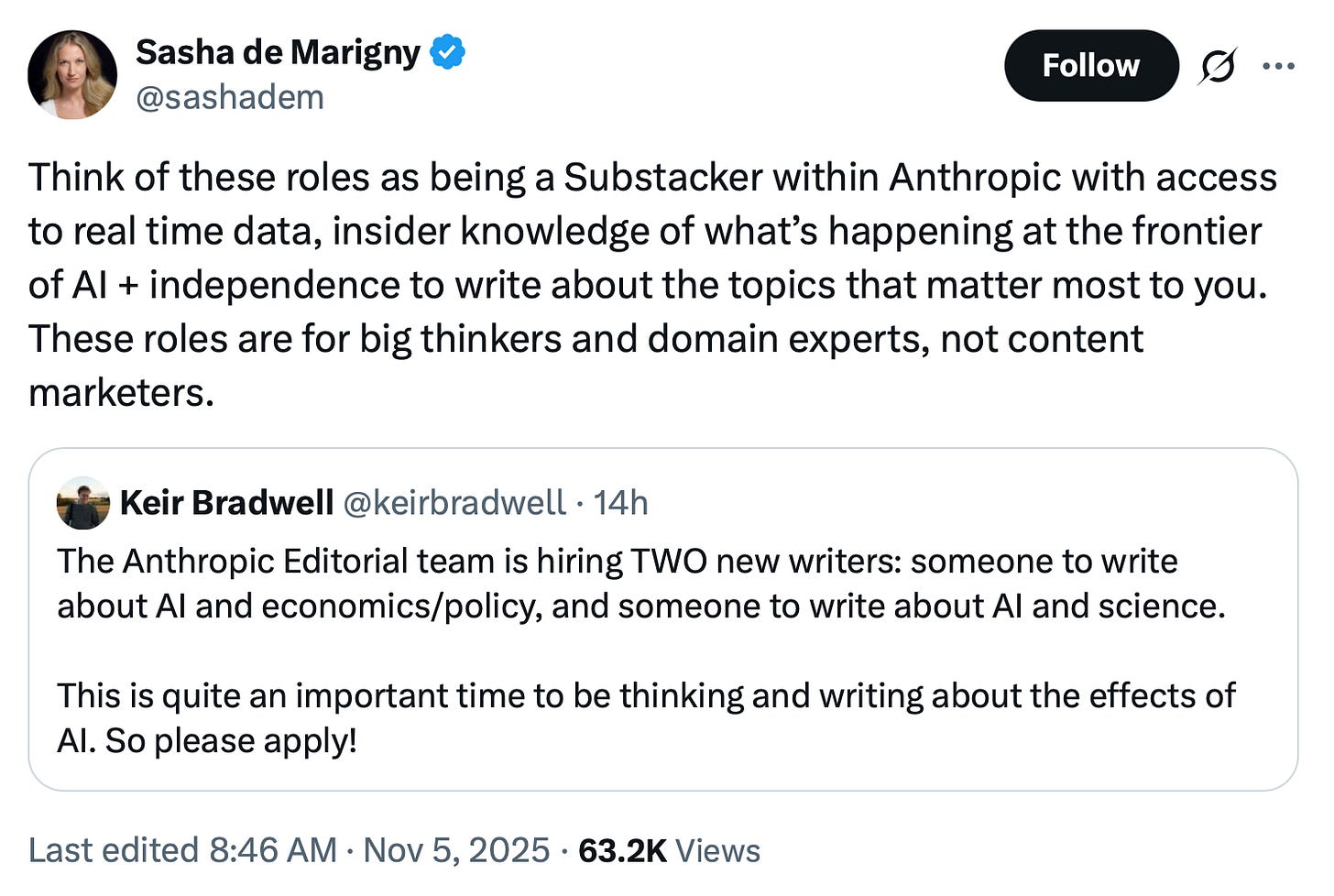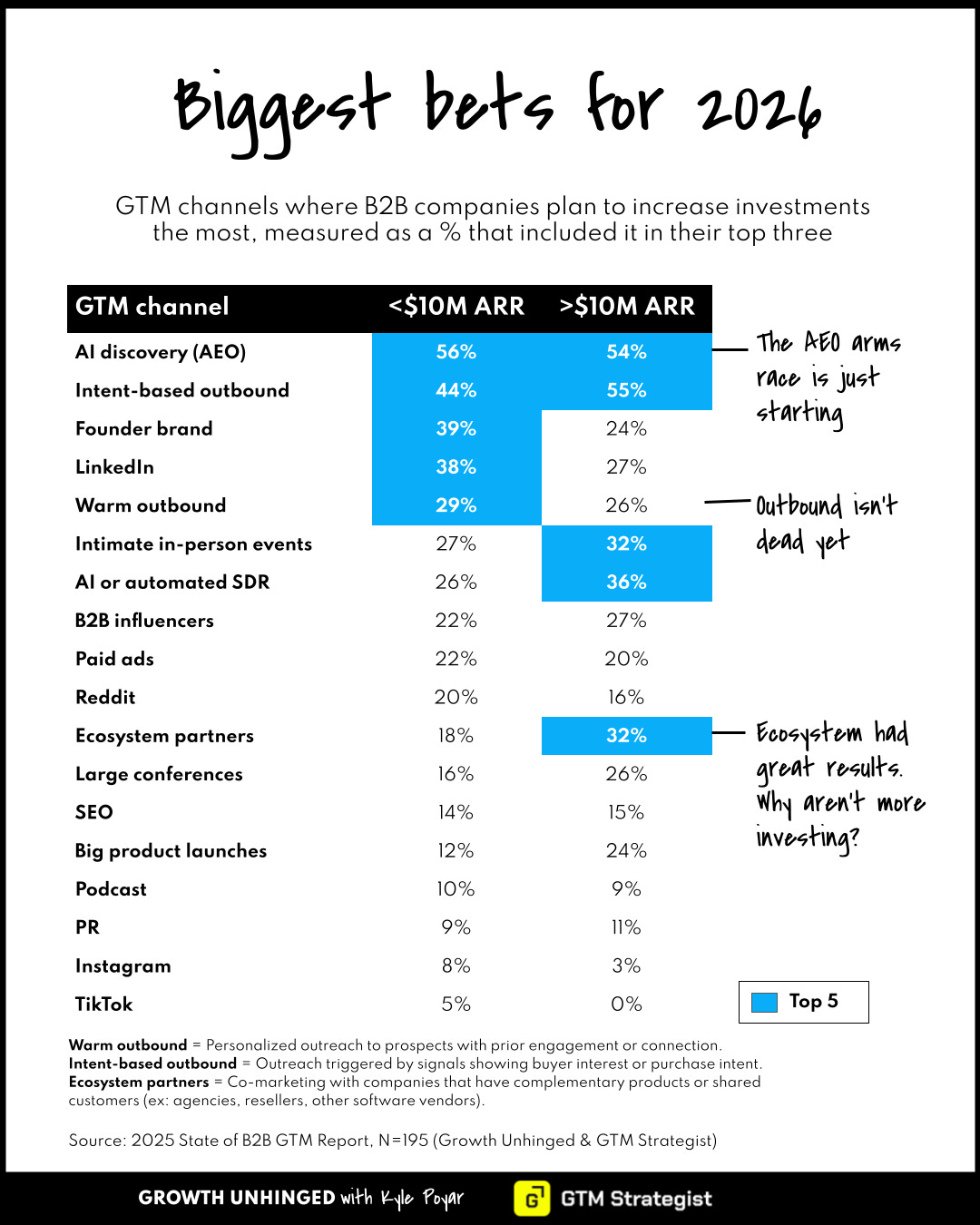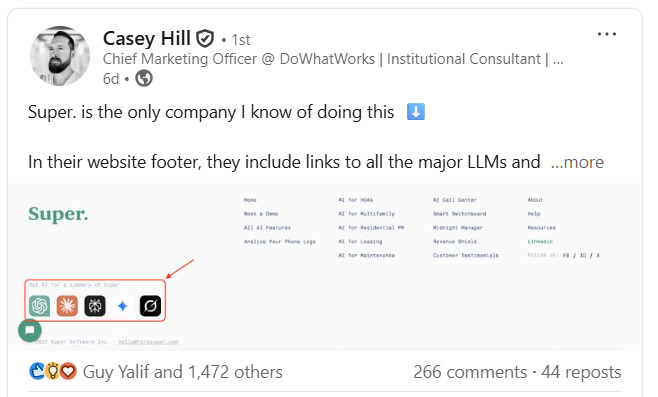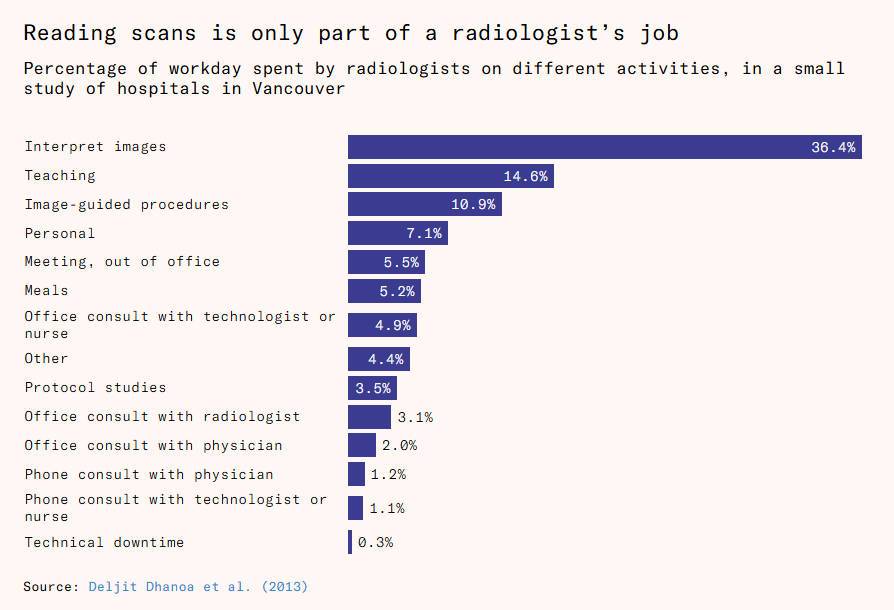How AI could make you more valuable
What you might've missed in Mostly Growth

Readers tell me they’re increasing investments into AI visibility faster than any other GTM channel. One of their favorite emerging tools is AirOps, the content engineering platform that helps marketers get found (and stay found) in the AI era.
Other tools stop at AI visibility. AirOps closes the loop. Teams can see the highest-impact pages and conversations to act on, then go after them with AI agent workflows. Think: refresh existing content, create new assets, or engage off-site where agents pull data.
Learn how to prioritize your brand’s next visibility wins here.
How AI could make you more valuable
In my new-ish podcast, Mostly Growth, my buddy CJ Gustafson and I curate the most interesting happenings in the world of startups and B2B growth. We seek out stories we think have been overlooked plus highlight new tools, business blunders, and potentially reliable things we read at 2am.
I’ll periodically recap these stories in Growth Unhinged and share links to go deeper. Up today:
Half the internet is AI generated yet content strategists make $400k
The next battle in AI discovery
HeyGen hits $100M and shares their bible for being AI native
How to say ‘no’
Why we still have radiologists
You shouldn’t celebrate a book deal
What we tried this month
🎧 Listen on Apple Podcasts | 🎧 Listen on Spotify
Half the internet is AI generated yet content strategists make $400k
You’ve probably seen this viral chart: analysis from Graphite found that more articles are now created by AI than humans. It’s a fascinating study, drawing on a random selection of 65,000 English-language articles on the internet that were published between 2020 and 2025.
What gets glossed over is that AI-generated content seems to have plateaued about a year ago in November 2024, roughly two years after the launch of ChatGPT. Since then the proportion of content that’s AI-generated versus human-generated has remained at a steady 50/50 ratio.
My takeaways:
More content didn’t necessarily mean better results. I suspect folks found that AI-generated content without an editorial review performed worse in terms of both search results and engagement.
Content is getting created with AI, not necessarily by AI. AI is acting as a thought partner. It’s helping keep content fresh. And it lets teams repurpose primary source material into multiple different outputs.
As the volume of mediocre content explodes, the best content will be rise to the top. The Economist pointed to a fascinating parallel in music streaming. Since 2017 the number of artists making over $1,000 per year in Spotify royalties has 3x-ed. Meanwhile, the biggest hits got even bigger: the number making $10 million per year has 7x-ed.
Anthropic now says they’re looking for two new expert writers who are big thinkers, describing the role as like a “Substacker within Anthropic with access to real time data” and insider knowledge. OpenAI, too, is now paying nearly $400,000 for a content strategist.
AI hasn’t necessarily spelled the death of human-made content. What it’s done is make the top 1% writer much more valuable.
Catch this episode on Apple Podcasts, Spotify, or YouTube.
The next battle in AI discovery
In my recent State of B2B GTM report I asked where B2B companies are placing their bets for 2026. The top channel bet was AI discovery aka answer engine optimization (AEO).
The AEO arms race is clearly heating up. I’m now wondering what comes next and where the best teams will gain a durable edge over their competitors.
One trend is shifting from being mentioned by ChatGPT to convincing ChatGPT to say the right things about your product. This is a subtle difference, but an important one. AEO marketers need to essentially become product marketers, defining exactly what they want the product to be known for and ensuring LLMs consistently convey the right message.
Casey Hill from DoWhatWorks recently shared a fascinating example of a company that’s taking this even further. In Super’s website footer they include links to the major LLMs with a preset prompt that positions the company in the best possible light. If buyers already trust ChatGPT, why not let it become your best sales rep?
HeyGen hits $100M and shares their bible for being AI native
HeyGen, the AI video generator, recently announced hitting $100 million ARR. While I’ve become increasingly skeptical of these ARR milestone posts, what stood out about Joshua’s piece was going behind-the-scenes into how they build, ship, and win in the AI era.
My biggest takeaways:
Ride the technology wave with compressed planning cycles (HeyGen plans roadmaps two months out, not 12-18 months ahead), building for automatic improvement as models improve, and parallel experimentation.
Quality can’t suffer even as feature velocity increases. HeyGen is willing to make sacrifices around UI, but not the video quality a user achieves on the platform.
Adopt a universal team structure with PM + engineering + design + data science. (Joshua didn’t talk much about product marketing, although I suspect they should be part of the mix as well.)
How to say ‘no’
It’s been about 30 days since I officially left VC to go full-time on Growth Unhinged. My biggest struggle has been cutting down on distractions to keep the main thing the main thing. (I shared some of my early observations here.)
When I was in my 20s I said yes to nearly every opportunity, and I credit that with being a cheat code in my career. It helped build my network, hone my perspective, and open my eyes to new things. And, let’s face it, tech is a small industry. Putting good karma out in the world tends to come back around.
But what was once a feature has turned into a bug. Saying ‘yes’ always comes with a trade-off, you just might not know what that is in the moment. I find myself going back to Lenny Rachitsky’s fantastic guide to saying no. Five strategies you should borrow from Lenny (my favorite is #3):
Just don’t reply
Pivot to email
Create a policy for yourself (and then tell others the policy)
Block out deep work time (and don’t ever schedule over it)
Ask to check back in a month from now
Catch this episode on Apple Podcasts, Spotify, or YouTube.
Why we still have radiologists
Of all the practical applications for AI, radiology seems to be one of the most clear-cut. AI models are fantastic at it. They can “detect hundreds of diseases across multiple types of scans with greater accuracy and speed than human radiologists in benchmark tests” (via Works in Progress).
Experts have been declaring that hospitals should stop training radiologists for nearly a decade. And I’ve been nagging my radiologist friend Khalid about it for at least 18 months 😉
Yet against all odds radiology is thriving. Residency programs offered a record number of positions this year. And it’s the second-highest-paid specialty (earning a cool $520,000 per year on average).
This piece is worth reading as a lesson for what can happen when AI enters a profession, and why AI doesn’t necessarily equate to mass layoffs. A few reasons why for radiology: (1) the stakes of being right are high; (2) demand is elastic where AI productivity gains lead to more overall demand; (3) AI can do part of the job, not the entire job.
You shouldn’t celebrate a book deal
In the writing world books are seen as the pinnacle of prestige.
Writing a newsletter? Meh, anyone can do that.
Signing a book deal? Wow, you’re legit.
It’s time to put this myth to bed. A quick look at the economics of business book deals from CJ’s and my experience:
Most advances are small. Many are just $10,000 and paid over multiple years (one-third at signing, one-third at finished editing, one-third at publishing). Few are above $50,000.
Advances need to be earned out before royalties kick in. The majority of business books don’t earn out the advance.
Royalties might be 10-15% of revenue. That’s perhaps $3 per book sold. (Compare that to $10 to $15 per month with a newsletter subscription.)
Publishers want authors to do their own sales and marketing. A common ask is for authors to bundle book sales into their consulting work or paid speaking. Authors do all the marketing to get 10-15% back.
You might be better off selling Girl Scout cookies than signing a book deal. That newsletter doesn’t seem like such a bad idea after all…
What we tried this month
Each week CJ and I talk about what we tried. It’s usually a tech product, but doesn’t need to be. A few shoutouts:
The best B2B swag we’ve ever seen
Planta to keep my plants alive
A high-speed electric boat that sells for $300k
Chewy for dog beds and an unreal return policy
Bullying AI into giving better responses (because of a Penn State study)










Shared this one with the team. Great insights.
“Sabrina Carpenter…CMO at Hubspot?”